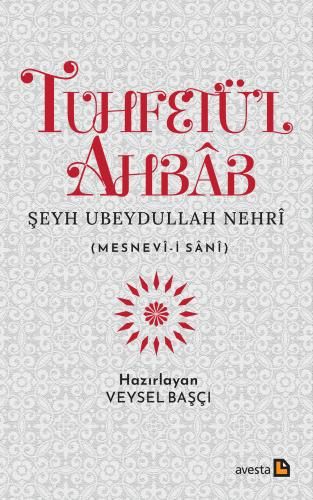
Tuhfet'ül Ahbâb
The work called Tuhfetü'l Ahbâb (a gift to friends), written in the classical masnavi pattern by Sheikh Ubeydullah Nehrî, who made a name for himself with his protest Sufi identity in the 19th century and as the leader of a movement with political engagements on behalf of the Kurds, is a masnavi reading in the Nakshi schools before and after Mujaddidiyya. emerged as a result of tradition. This unique poetic work, named Mesnevî-i Sânî (second mesnevi) to evoke Mevlana Celaleddin-i Rumî's immortal masterpiece, shows Sheikh Ubeydullah's poet identity as well as his political and Sufi identity. The work, which is very rich in terms of literary form, content and number of couplets, is also remarkable in terms of reflecting the mystical and literary depth in the classical madrasahs and dervish lodges in the Kurdish geography, as well as the influence of Mevlana and Mesnevi in the Nakshi lodges, lodges and schools. The work generally includes the beliefs, methods, principles and rituals of the Nakşîbendiyye Sect and the Halidiyye branch of this sect. In the work, the series, maqamat and menakibnames of the Hâcegân Meşâyihi and Nakşî-Halidî sheikhs, called the Golden Silsile, are described poetically within a hierarchical structure, and in many respects, they have relatively different features from similar sequences and menakıbnames in Nakşî literature. One of the most notable aspects of the work, which reveals the poetics of the Naqshbandiyya Order, is that Sheikh Ubeydullah wrote down the events of participating in the War of 93 with the Kurdish army consisting of his disciples and followers, whom he called My Veterans, in the same poetic pattern and style with the meticulousness of a chronicler, recording the events of which he was the subject and witness. is that it has kept. During the Russian occupation of Erzurum Province and Kars and Beyazıd sanjaks, II. Sheikh Ubeydullah, who took the side of the Ottomans at the request of Abdulhamid and led and managed a significant part of the Kurds who resisted the Russian occupation in these wars, shared a lot of information and events, including the liberation of the Bayezid Sanjak under Russian siege and the regions connected to this sanjak and the nature of the conflicts that extended into the South Caucasus. He conveyed it with his own observations and evaluations. In this respect, the work has resource value and is an alternative, historical reference to the official discourses of the state archives.
| Publisher | : | Avesta Publications |
| Number of pages | : | 520 |
| Publication Year | : | 2022 |
| ISBN | : | 9786258383096 |
| Preparer | : | Veysel Başçı |
| The heart | : | Turkish |


